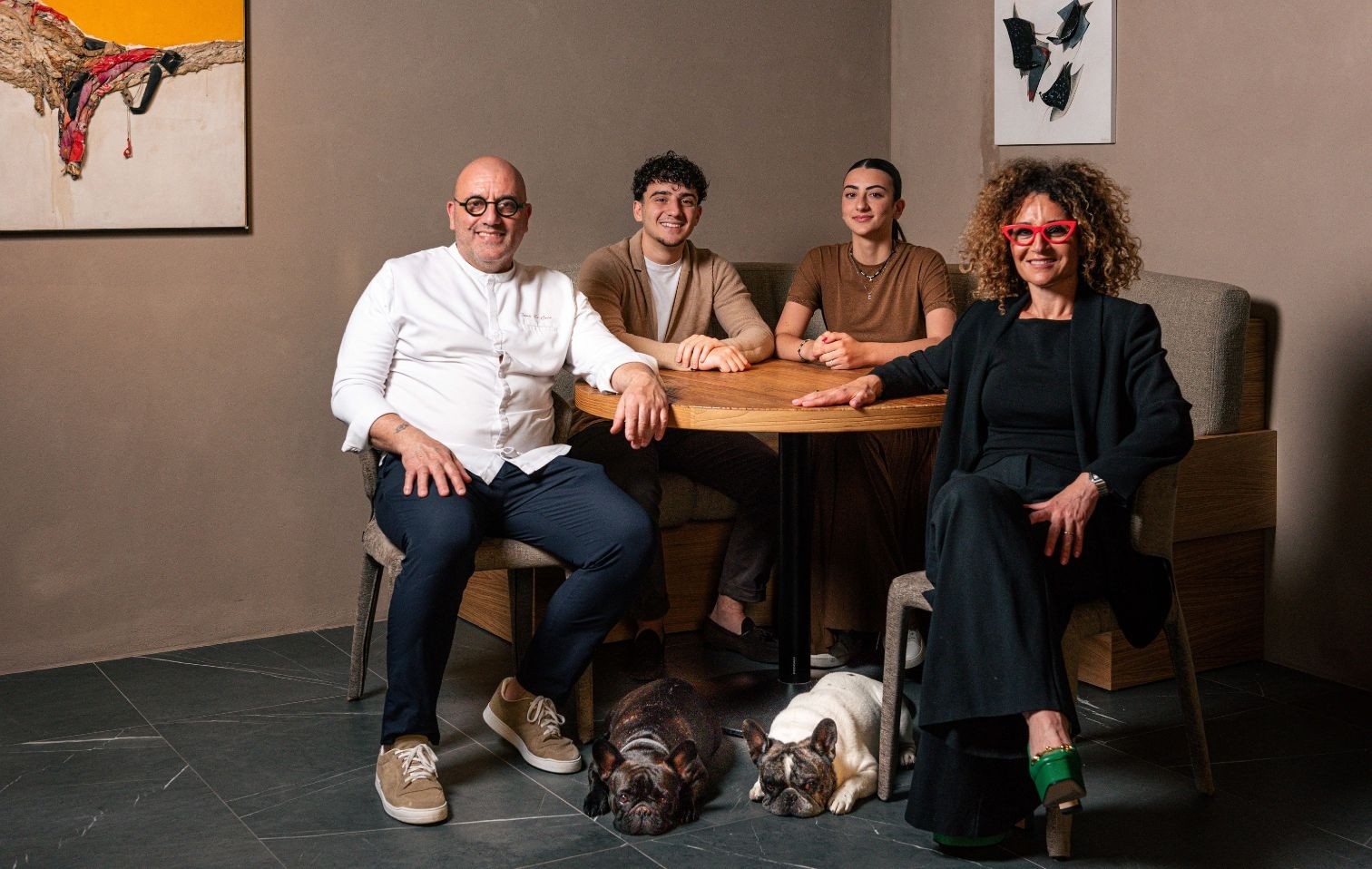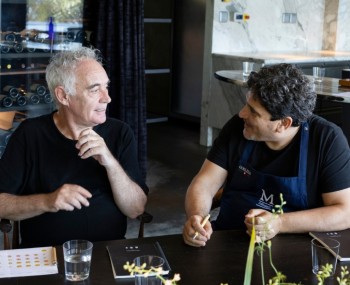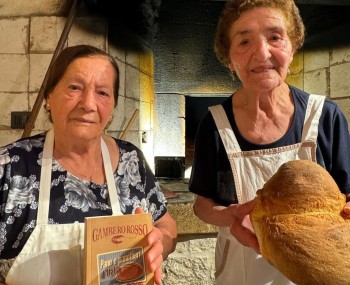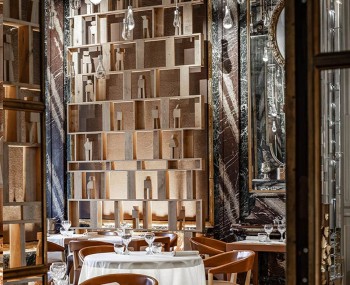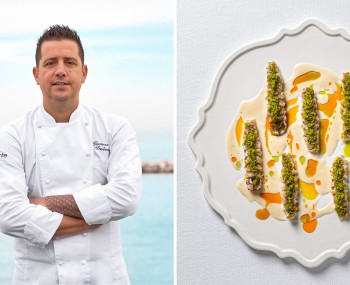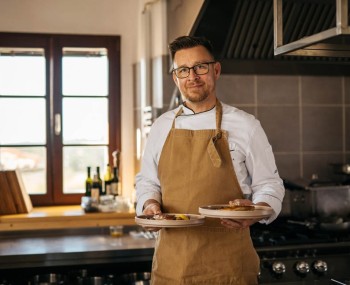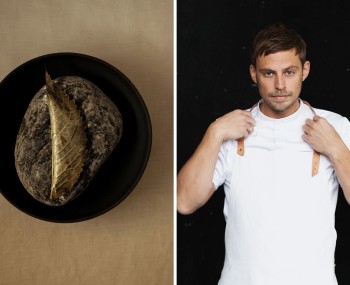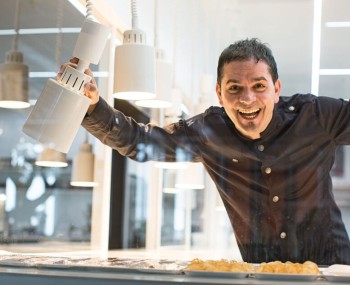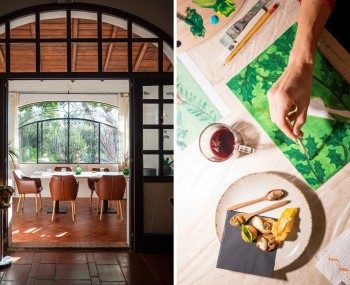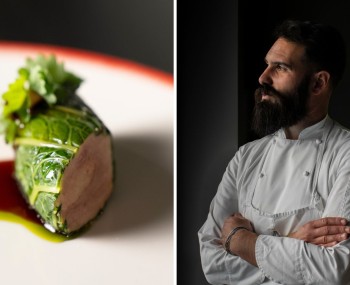The Pupi arrive at Villa Palagonia and the story is that of a strong Sicily which, through art and history, looks up to what lies beyond.
There is a before and after in the history of I Pupi, the Michelin-starred restaurant of Chef Tony Lo Coco, now reborn in the noble spaces of the lower buildings of Villa Palagonia, famous for the monstrous figures that surround its 18th-century walls. Just a few meters away, the new location is right across from the previous one (now called TuMa, a trattoria offshoot of I Pupi). The restaurant, designed by the Luigi Smecca Architetti studio, covers almost 200 square meters distributed across four distinct rooms, with 45 seats and a profoundly reimagined identity.
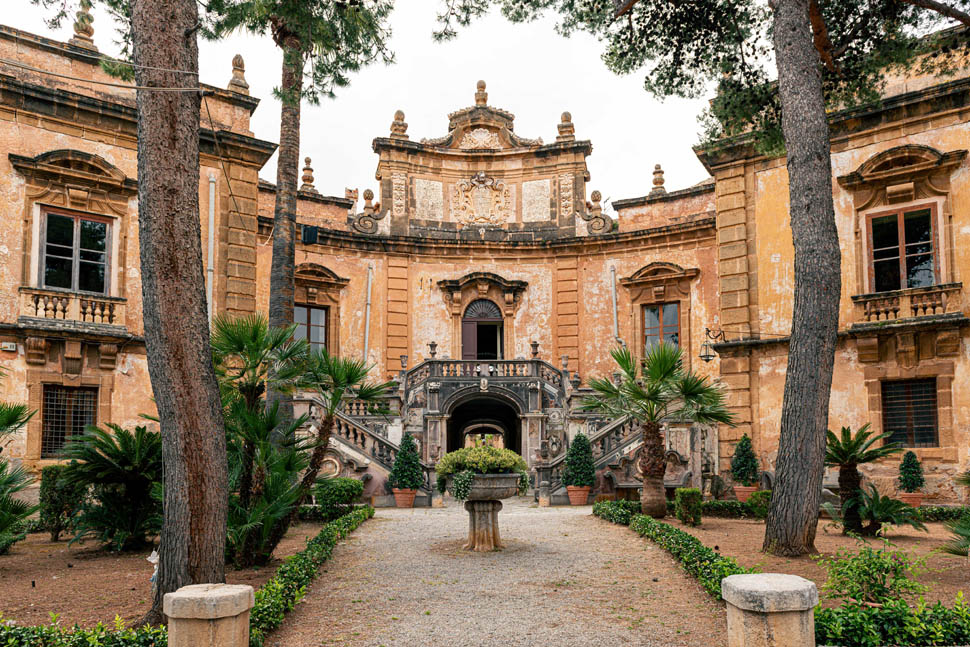
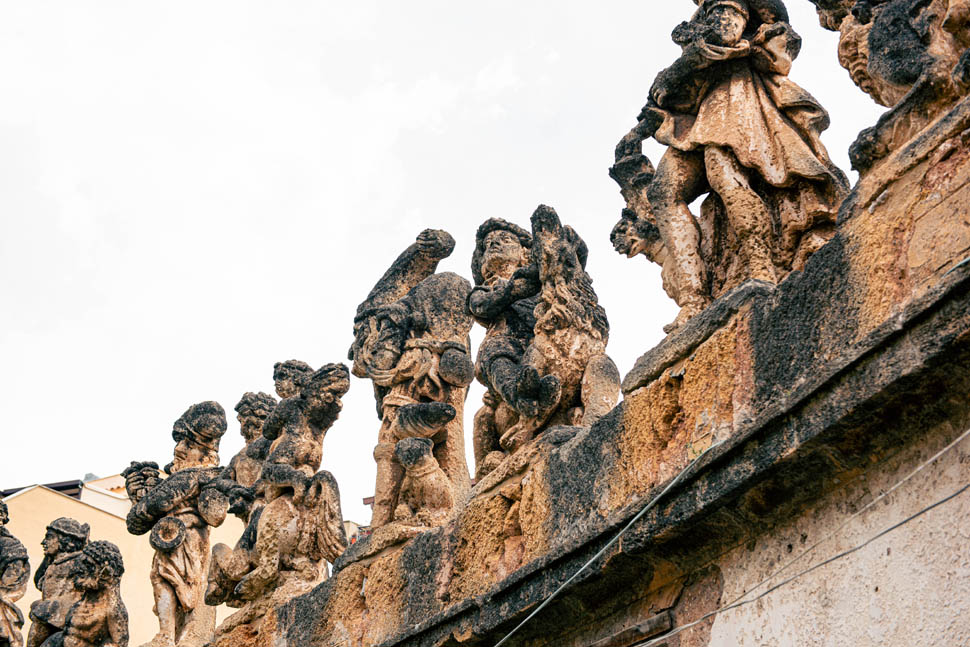
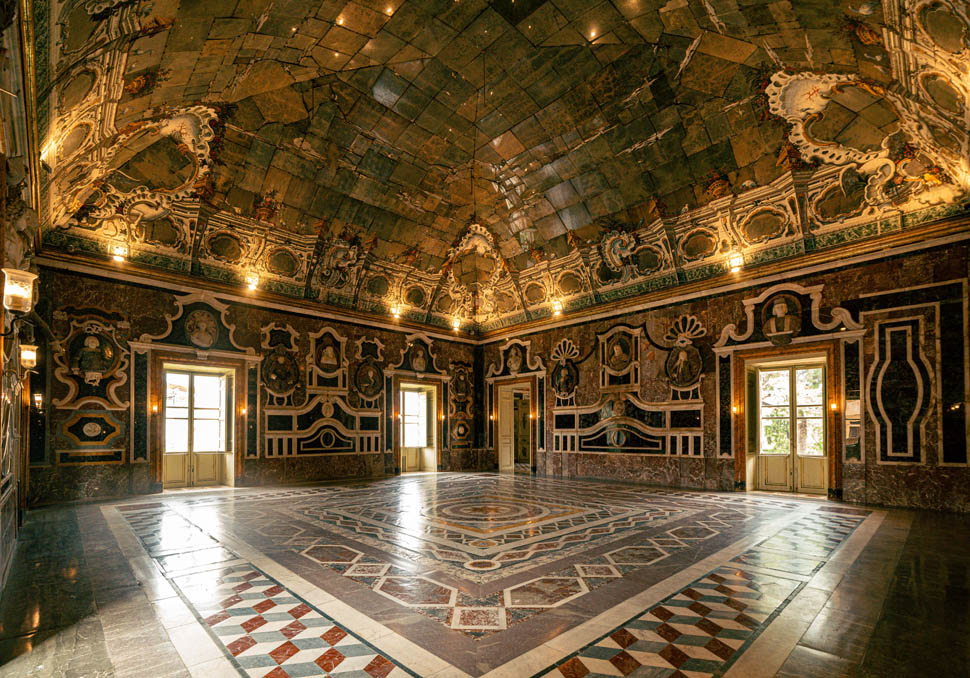
The real novelty lies in three experiential formats that coexist. There are traditional rooms, on several levels, refined and adorned with famous works of art on napkins. There is the wine cellar-caveau, a private room that houses up to 1,300 wines and can accommodate a maximum of six guests; here, sommelier Andrea Prizzi celebrates and narrates the best labels in the world paired with signature Sicilian tapas. Finally, there is the eagerly awaited Chef's Table, a kitchen ‘inhabited’ by the chef, where you can watch the creative process live and truly enter Tony Lo Coco's home, surrounded by dishes, anecdotes and thoughts.
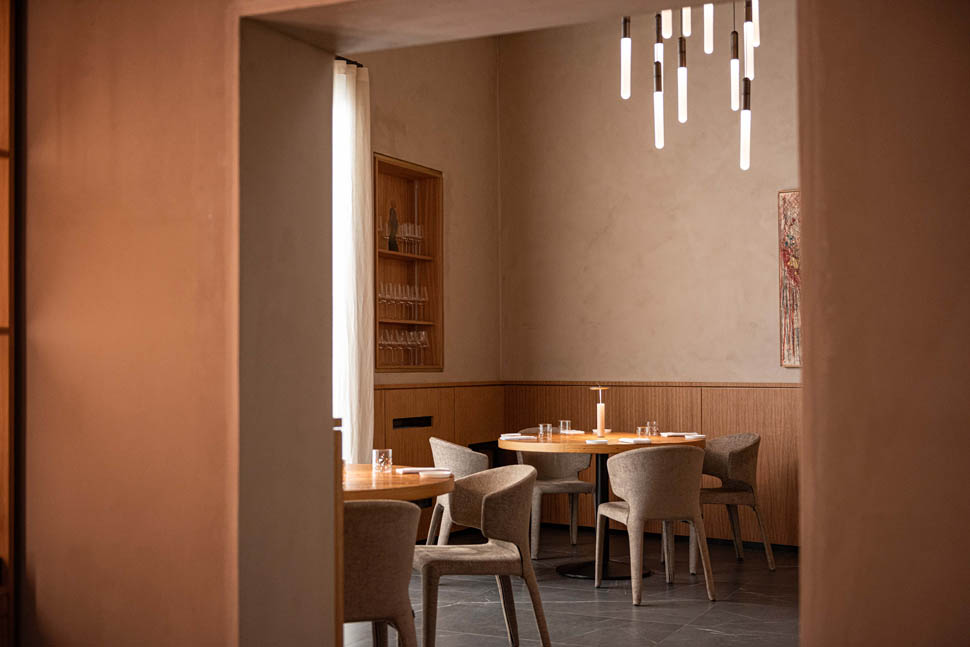
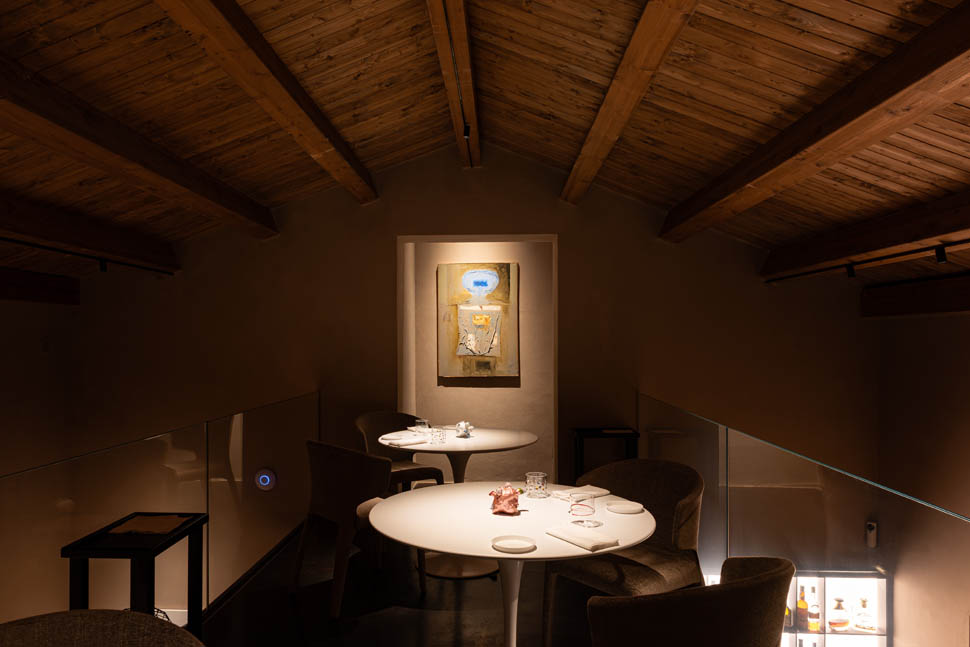
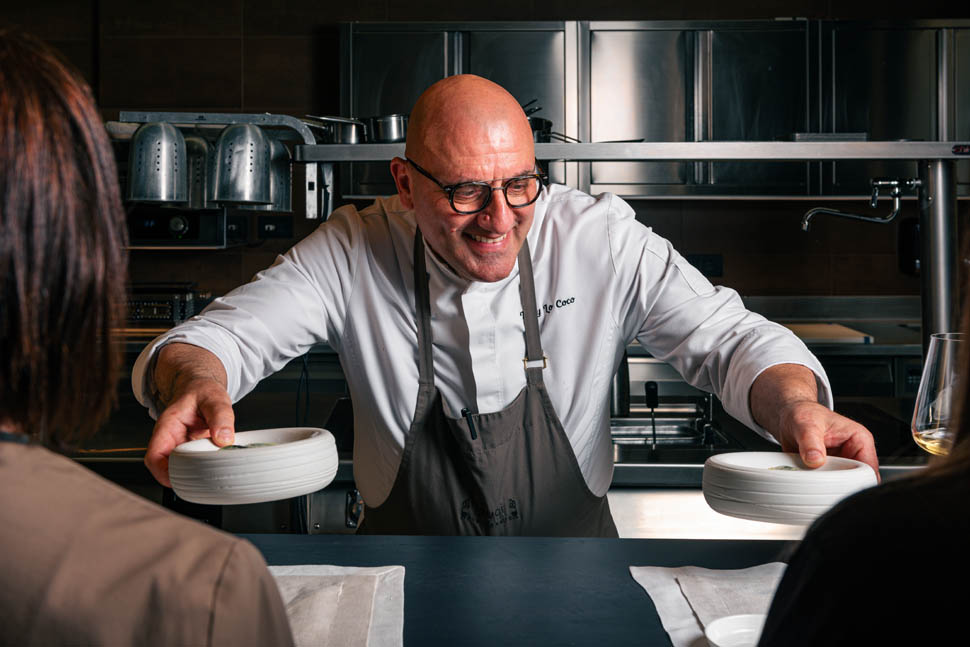
The lighting is warm, designed to envelop guests, and every detail is tailor-made, from the handcrafted furnishings to the high-tech materials used in the open kitchen. A restaurant that tells its story through design and memory, but also through its open and constantly evolving vision.
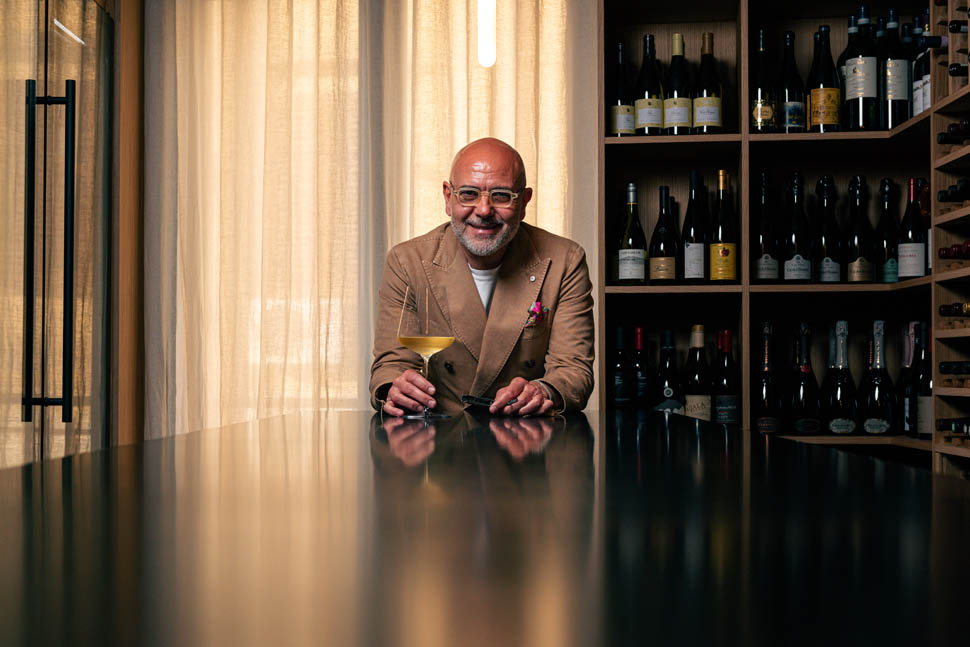
Chef Tony Lo Coco, the art of hospitality and cuisine as a free narrative
Tony Lo Coco is a self-taught chef and, precisely for this reason, deeply free. Born in 1974 and raised between Palermo and the provincial seaside villages, he built his gastronomic identity starting from family memories. Then came travel and experiences to enrich his passion. He took his first professional step in the world of banqueting with “Cozzo dei Ciauli,” a successful reception venue that he managed for 15 years at a time when banqueting was perhaps the emblem of the restaurant industry, the most appreciated, well-known, and, yes, even the most profitable. Yet Lo Coco and his wife (and business partner) Laura Codogno always felt a strong need for new stimuli and new ideas.
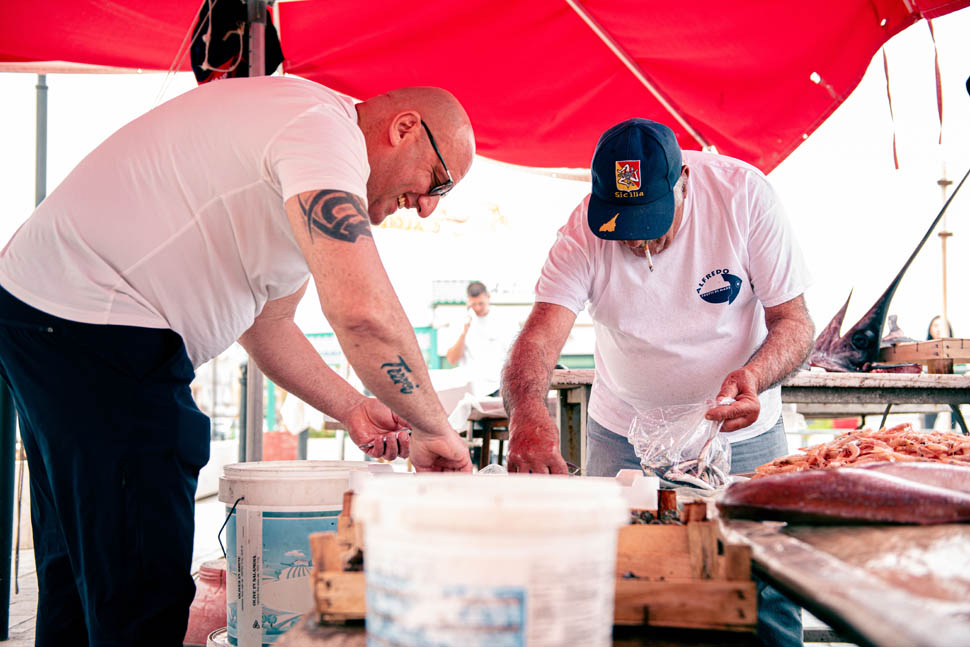
“That experience taught me so much and gave me so much. There was a lot of work, but I felt that something was missing because, when I thought about it, I wanted to establish an exchange with the guests, a relationship that wasn't possible with banquets. I wanted more!” he says. It was 2009, and I Pupi was born. The concept is fine dining, but his nature is that of a host: “The customer must feel at home,” he explains, “and order what they want, even à la carte. Fine dining should not be a cage, but an opportunity.” This overall vision was perhaps the real trump card that guaranteed him a Michelin star five years after opening. A trait of freedom that emerged from the very beginning: to promote the restaurant, Lo Coco began offering a fascinating exchange to the artists who frequented it—a dish in exchange for a work of art directly on the restaurant's napkins. This is how the famous artist's napkins were born, now framed in the dining rooms of I Pupi. Testimonials signed by big names such as Hidetoshi Nagasawa, Croce Taravella, and Michele Cossyro. An artistic story that turned into a gastronomic story.
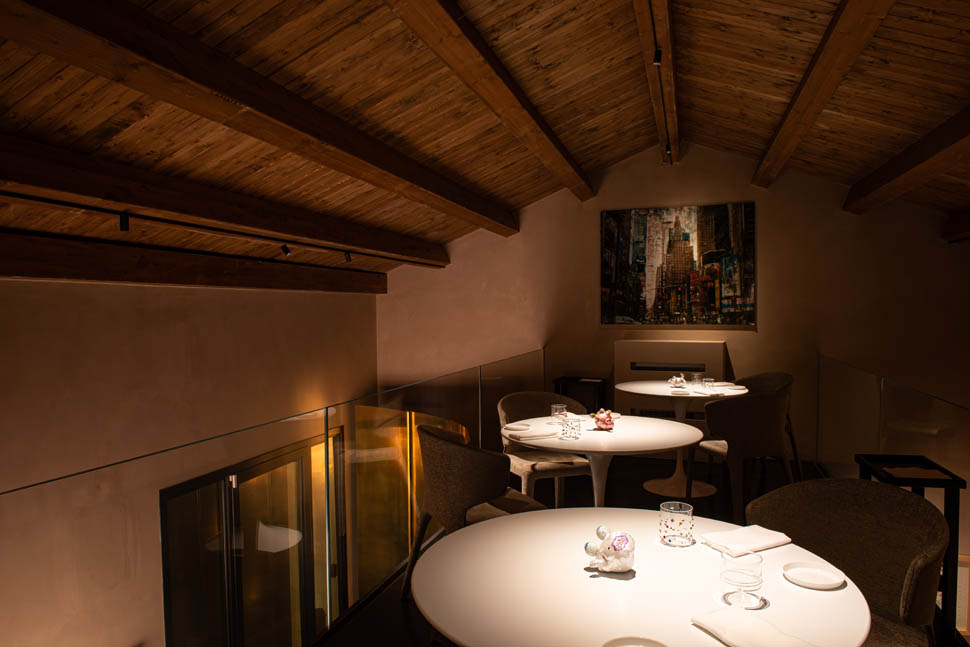
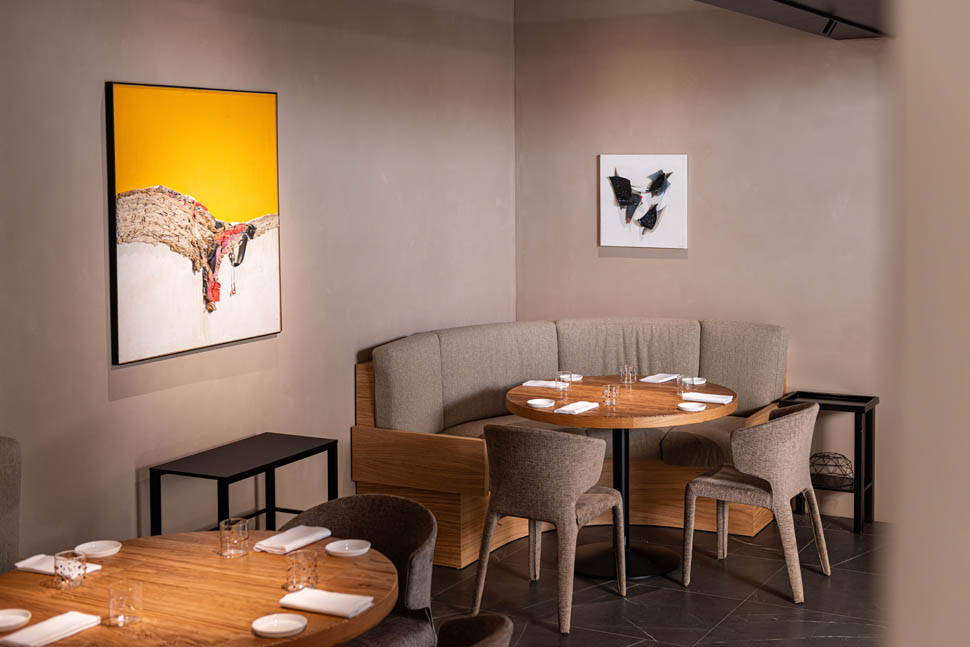
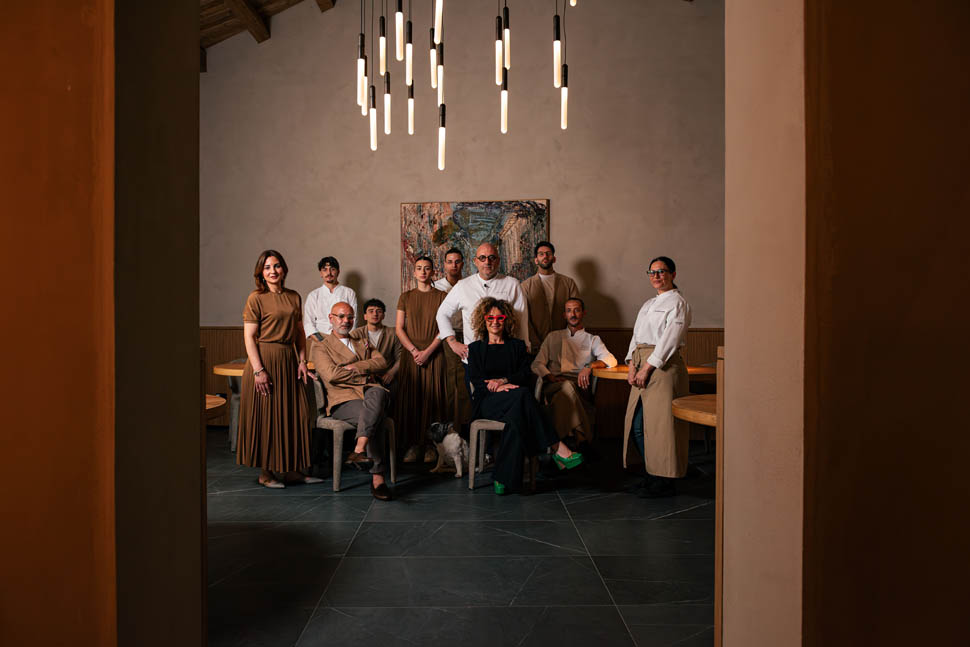
The dishes: when Sicily reaches the world in sixteen boundless steps
Chef Lo Coco's cuisine is above all a great alchemy of knowledge and expertise. The symbiotic relationship with the fishing boats of the seaside village of Aspra, memories of tables laden with food in days gone by, but above all the flavors of Sicily's past blended with influences from overseas. All this is the new Chef's Table, capable of surprising and astonishing. Unlike the menus offered in the dining room, here there is much more than simple tradition, a way to amaze even the restaurant's regulars with a simple stool and a view of the kitchen.
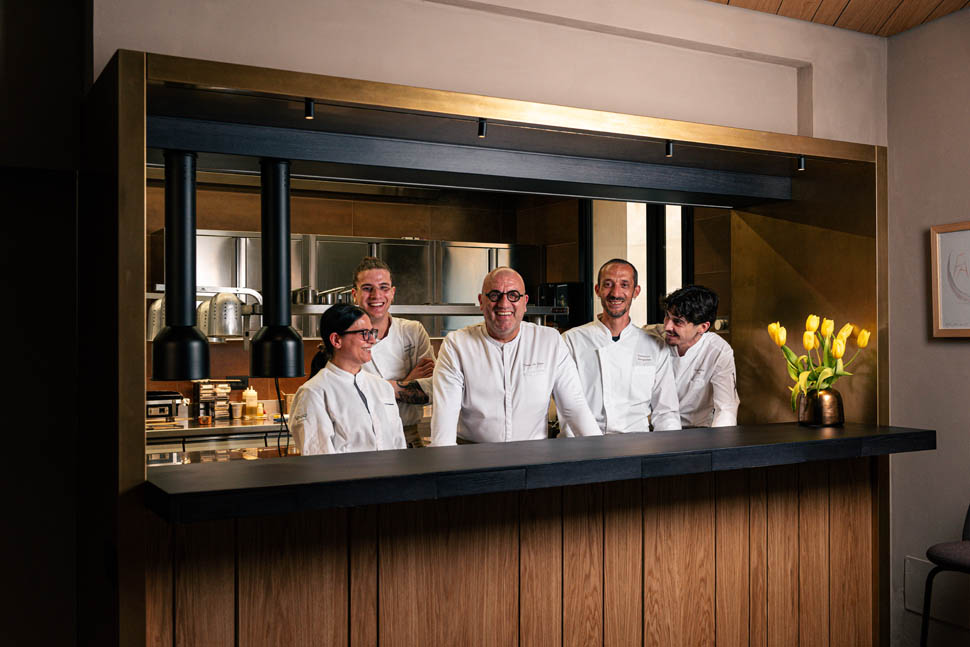
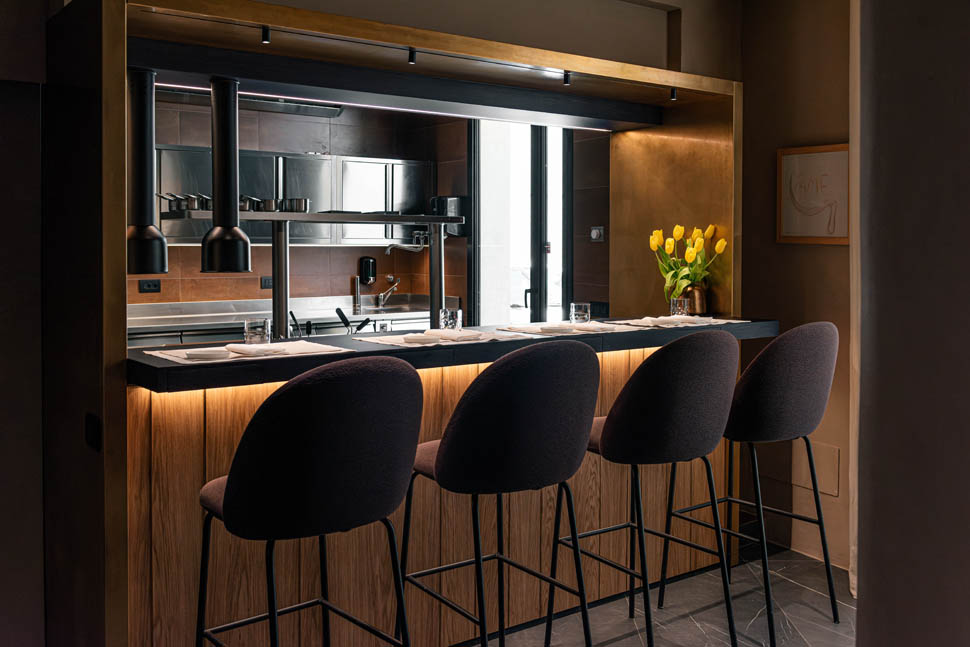
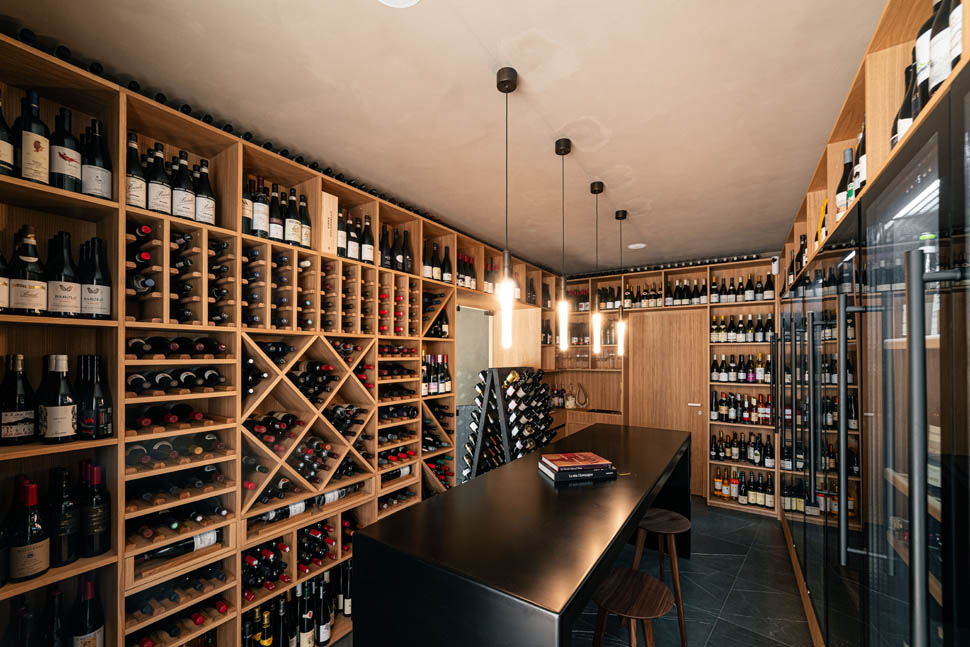
We begin with a series of amuse-bouches that tell the story of Palermo and beyond: tomato bread crumble with Palermo-style “canazzo,” faux cannoli, chickpea flour tacos, bao with Cinisara beef tartare, liquid tomato salad to drink like a pipe, bread with ricotta cream and caciocavallo cheese, and a surprising substitute for spleen with cuttlefish liver. Alongside, French butter with Bagheria verdello lemon, Sicilian grain breadsticks, and tumminia bread. Abundance definitely reigns supreme, but it gives way to well-executed reinterpretations that draw inspiration from Asia.
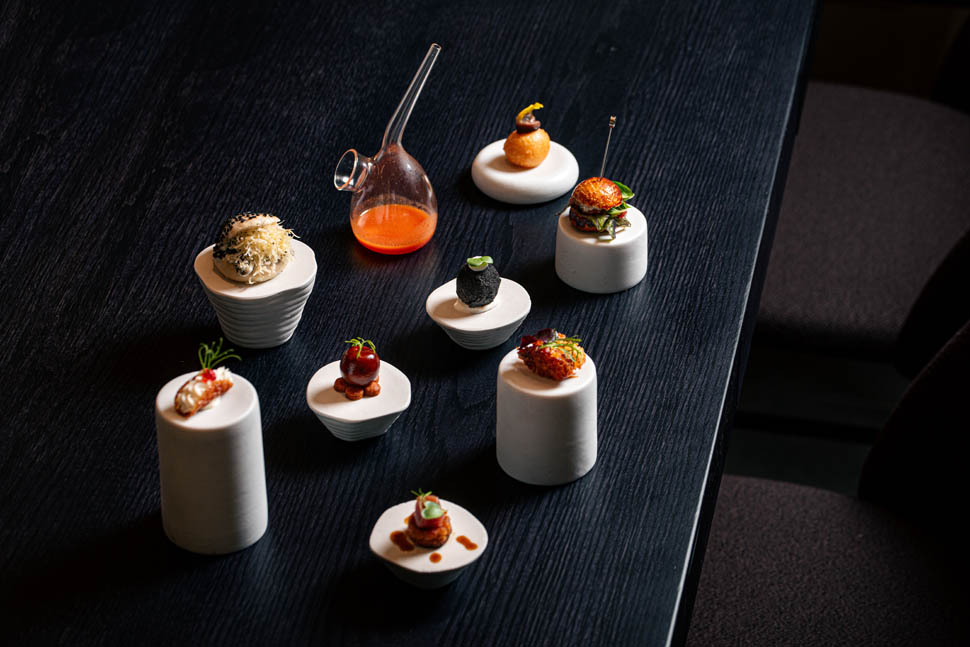
We then move on to dishes of great freshness and intensity: watermelon with sour cream, Genovese zucchini, and cucumber ice cream, followed by an oyster with 'nduja mayo and soy sauce and clams, to be enjoyed directly from its shell; raw scampi with crispy watermelon and bitter celery in a play of veiled transparencies and shadows; finally, muccuna (local sea snails) with wasabi mayo, honey-miso-soy sauce and potatoes. “I love to always recreate a sweet and sour note, taking inspiration from the East but also from ancient Sicilian customs. In fact, this was once the main method of preservation, with vinegar and sugar used in many preparations,” explains the chef.
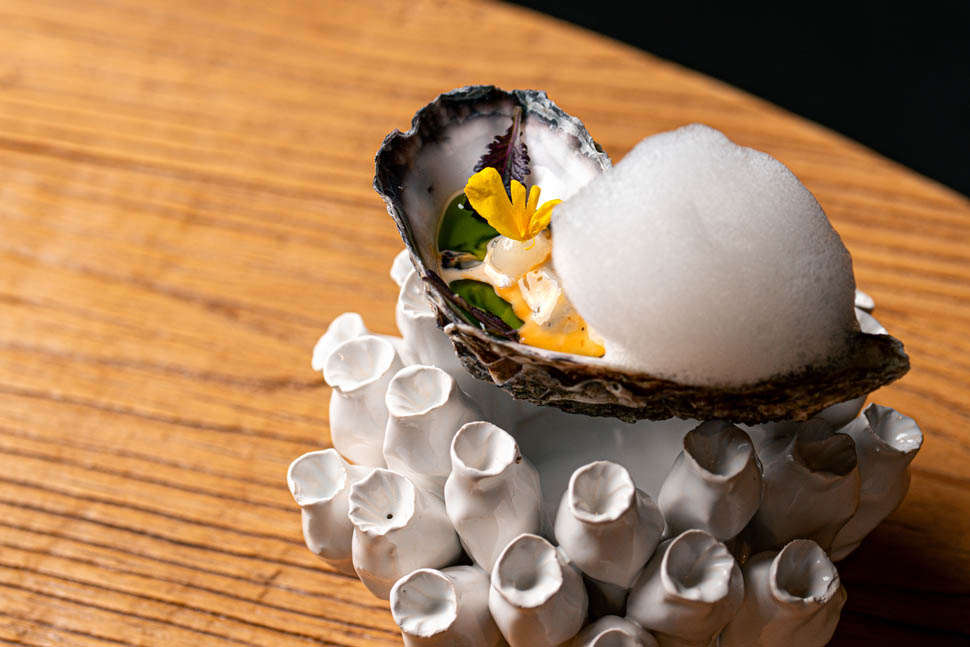
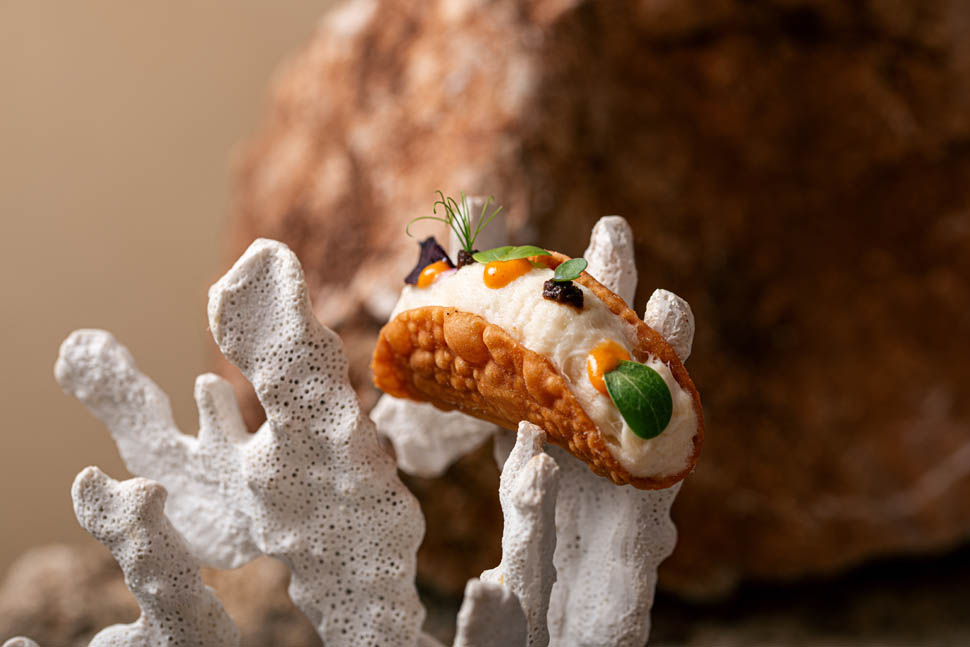
The dessert then becomes the inspiration for a savory dish: the sea urchin, or rather its shell, comes to life with a Pantelleria-style kiss of fried spaghetti with squid ink. Inside is the sea urchin meat, surrounded by tumminia breadcrumbs, glasswort sponges, and parsley with pure nduja cream. The textures alternate in a play of ups and downs, just like a dip in the sea. Another Sicilian tribute is the deconstructed arancina: the island regains its geometry, outlined by a thick saffron rice cream, topped with Nebrodi suckling pig and fried breadcrumbs. This is followed by spaghetti with gallinella fish, flambéed clams, and grapefruit air. A daring and successful dish, pungent and acidic, but irresistible.
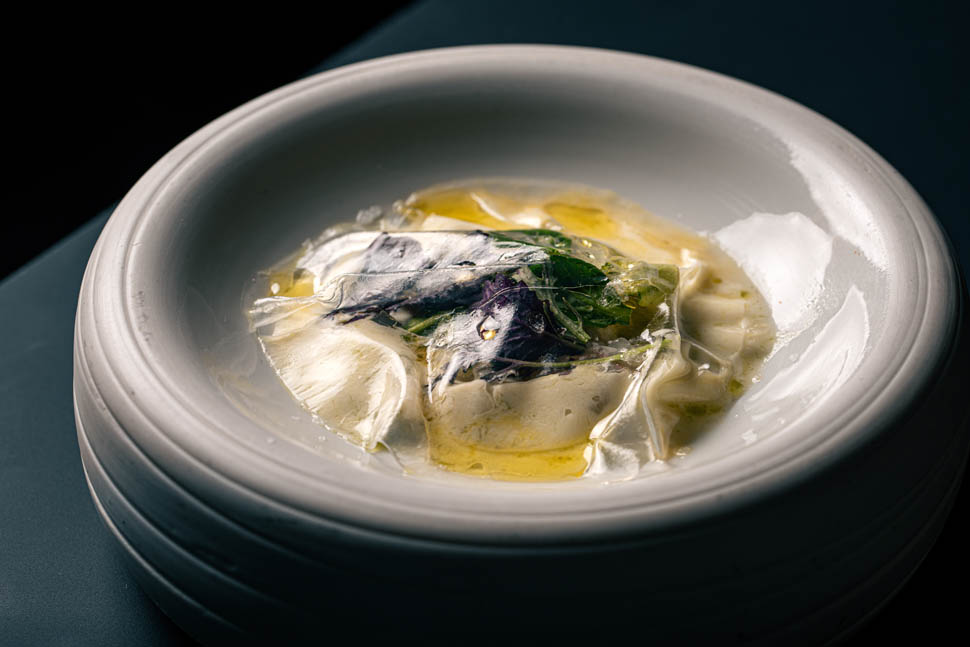
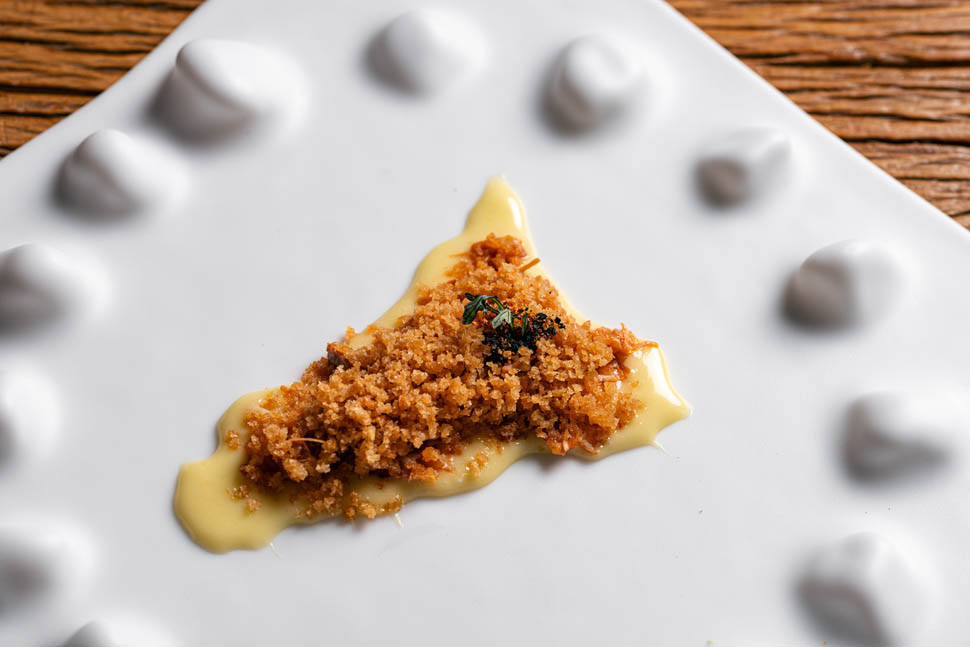

The timballo di anelletti revisits tradition with a squid ragu and San Pietro fish roe sauce, topped with a crispy wafer of overcooked and fried pasta. To finish, a true tribute to street food: stigghiola, which becomes seafood, with tuna, cuttlefish, and spring onion wrapped in a smoky embrace. And then there is the watermelon gelo – “which can only be found in Palermo and only in summer,” emphasizes the chef – with Avola almond ice cream, coffee jelly, and mini brioche with tuppo. The cannolo with warm ricotta is the final embrace, sweet and profound, of this Sicily that is never just Sicily, but a world, a vision, a history.
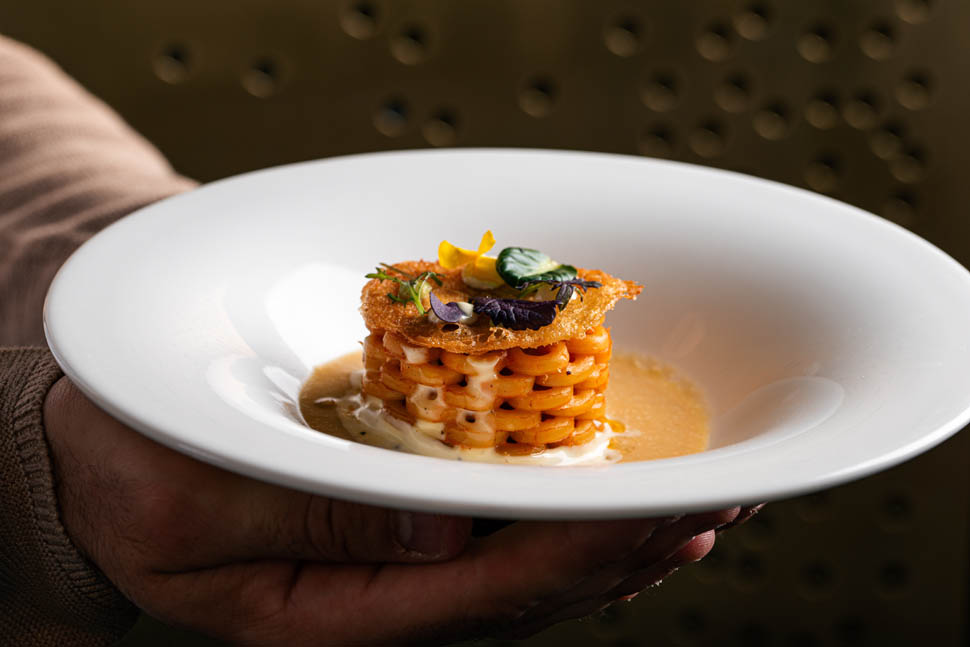
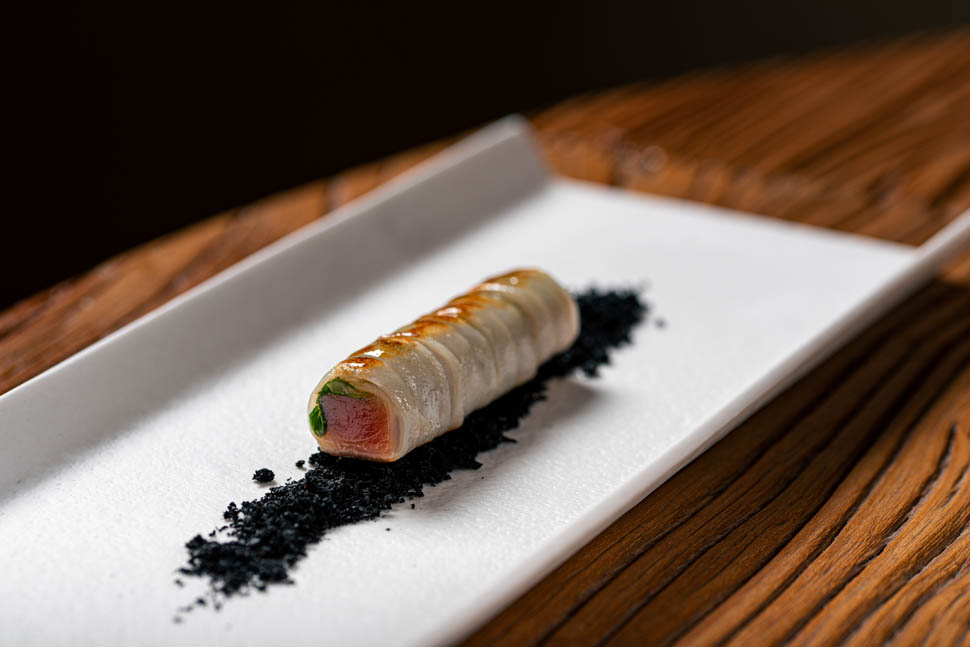
A new beginning between memory and future
With this new chapter of I Pupi, Tony Lo Coco signs a manifesto of his idea of catering: free, deeply cultured, human, rooted and at the same time international. In the rooms of Villa Palagonia, under the silent gaze of the Pupi and works of art, the miracle of true hospitality takes place: the kind that does not need to impress at all costs, but knows how to leave its mark, through a dish or a story. The service, managed with a kind smile by Laura Codogno, embodies this philosophy, together with her young children Turi and Emma, who were born and raised under the restaurant's star. The feeling on leaving is that of having enjoyed a complete experience, not only gastronomic, but also cultural and emotional. Because, as Lo Coco says, “being in a restaurant means feeling good, without constraints”. And today, I Pupi is all this.
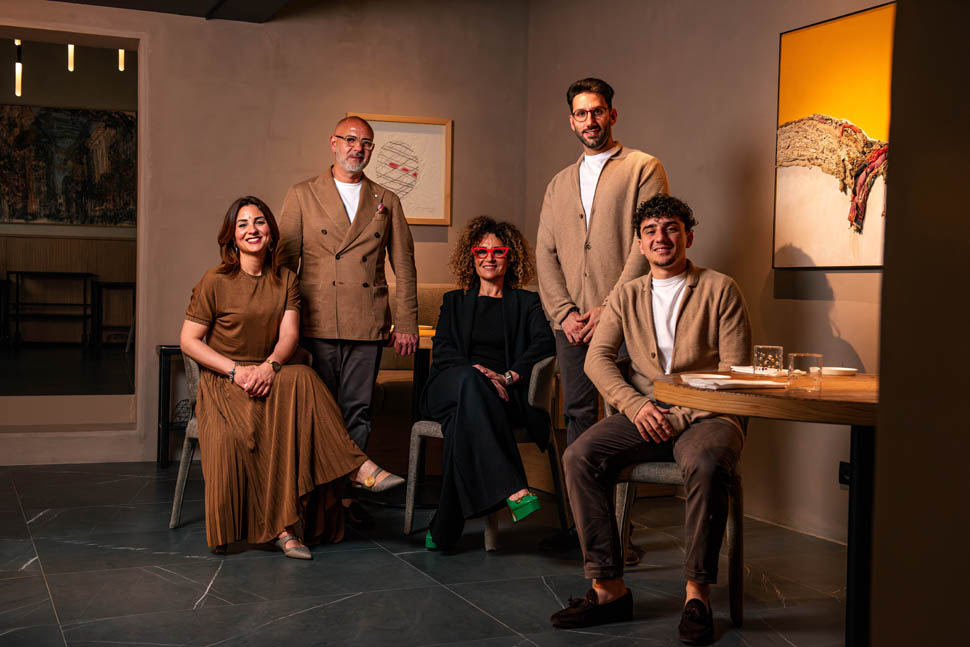
CONTACTS
Vicolo Cavallotti, 11 - 90011 Bagheria (Palermo)
Phone. 091 902579
